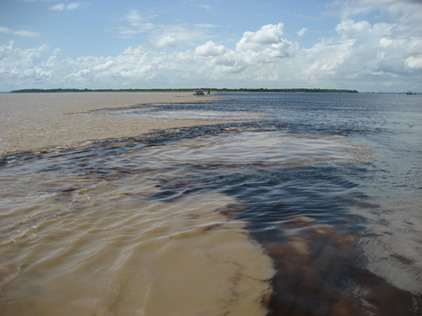There is the action of agricultural cooperatives and industrial companies, which, by ensuring the acquisition of the harvest (either in capitalist or peasant family-based molds) stimulate cultivation and agricultural specialization in certain areas of the parents. Tropical fruits and soy are the main products, whose most important production spaces are, respectively, the irrigated valleys of the Sertão Nordestino (São Francisco and Açu rivers) and the west of Bahia.
The following products from Brazilian commercial agriculture deserve to be mentioned:
- coffee: for a long time, it remained limited to Paraná and São Paulo, producing under the partnership regime. Minas Gerais, Espírito Santo and São Paulo maintain the lead in production. Bahia and Rondônia emerged as new producing areas, with a particularity: they are mainly cultivated by Paraná, former producers in the north of Paraná. Paraná has greatly increased its coffee production in recent years, due to the introduction of new species (dense coffee), developed by IAPAR (Instituto Agronômico do Paraná);
- Soy: expanded more vigorously in the country during the 70s, notably in the states of Paraná and Rio Grande do Sul. Typical export culture, it is increasingly focused on the domestic market due to the growing consumption of margarine and oils in Brazilian food. Currently, there is expansion in the cerrado areas, especially in the states of Mato Grosso do Sul, Mato Grosso, Minas Gerais, Goiás and Bahia;
- sugar cane: despite being cultivated in Brazil since the 16th century, its production was stimulated, from 1975 on, with the creation of Proálcool. The State of São Paulo has more than half of the national production, but it is also found in Goiás, Paraná, Rio de Janeiro, as well as in northeastern states (Zona da Mata);
Do not stop now... There's more after the advertising ;)
- Orange: product widely cultivated to meet the demand of the juice industry, the state of São Paulo is its main producer. Paraná and Minas Gerais are becoming new and important production areas. Brazil is a major exporter of concentrated juice, mainly to the US;
- rice: Rio Grande do Sul is the largest national producer of irrigated rice. Other states stand out in the production of this basic food crop: Santa Catarina, Minas Gerais, Mato Grosso, Maranhão, Goiás and São Paulo.
Other outstanding products are: wheat, despite being insufficient to supply the domestic market; cotton, heavily controlled by the textile and food (oil) industry. Cocoa, an ecological crop, is in crisis, especially in Bahia, its largest producer.
It is worth remembering that many producers in the South, mainly from Paraná and Rio Grande do Sul, changed their territory. Among the main causes is the price of land. As a result, many migrated to other states in the country, becoming mainly soy and coffee producers. Others moved to neighboring countries such as Bolivia and Paraguay. As already mentioned, the land issue is not just a national issue, it is already becoming a transnational issue.
“From grain to grain – transgenic or not – the cultivation of soy has spread to all regions of Brazil in the last three decades. Today it occupies an area five and a half times larger than the Netherlands. In 2003 and 2004, Brazil was the world's largest exporter of soy and has maintained its position as the second largest producer, after the United States. The forecast is that this condition of the world's largest exporter will happen again soon, consolidating itself over the next few years”.
(SCHLESINGER, S., NORONHA, S. Brazil is naked! The advance of soy monoculture, the grain that grew too much. Rio de Janeiro: FASE, 2006).
The map above represents the advance of soy production in Brazil, whose main socio-spatial consequence was:
Throughout the economic history of Brazil, which of these agricultural products was not part of a monoculture or high structural impact practice in the country?

